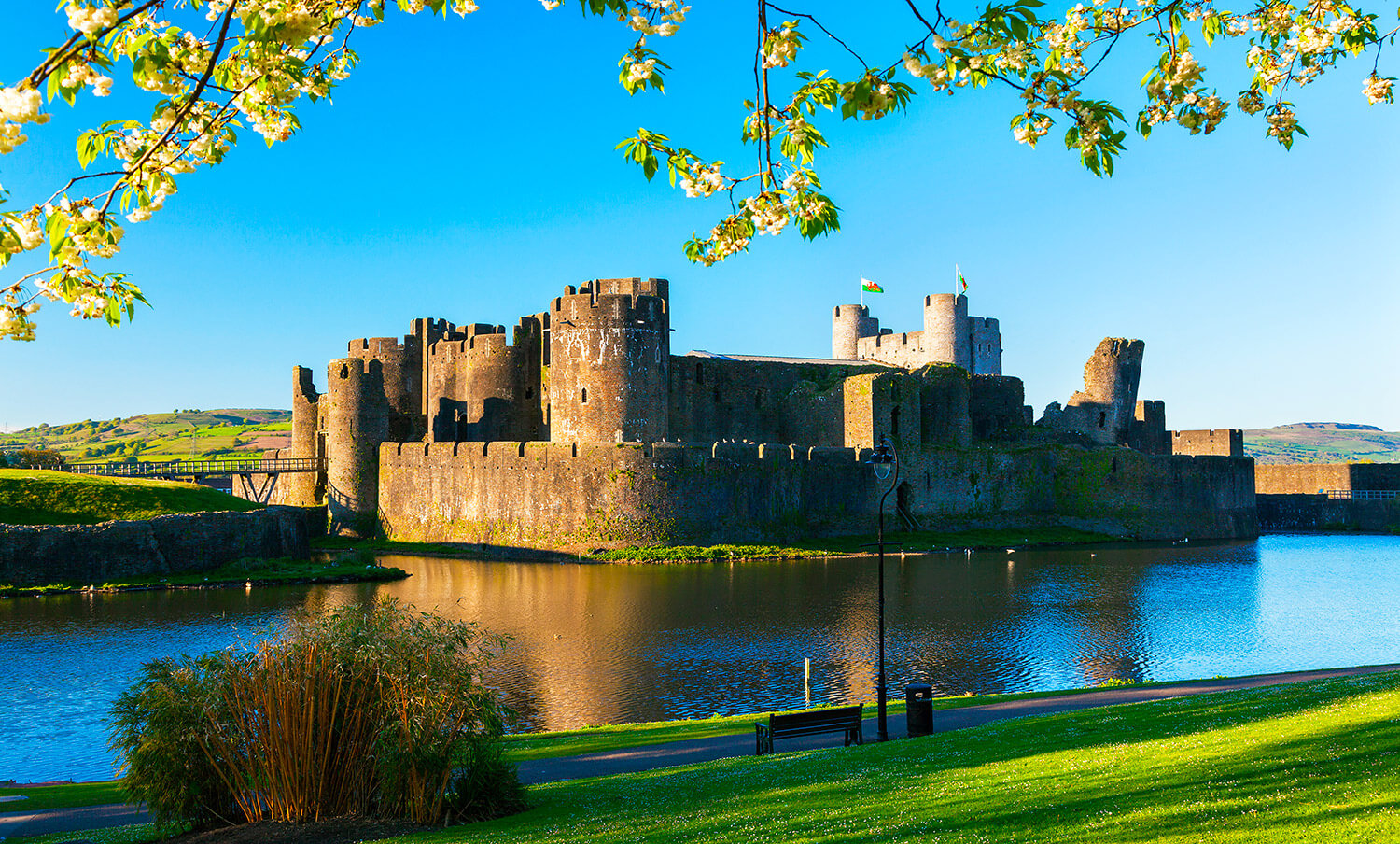
Are you arranging to meet us at our Caerphilly office to discuss your personal injury case?
Here is some useful information about the history of Caerphilly.
Caerphilly is a charming Welsh town located 7 miles North of Cardiff at the Southern end of the Rhymney Valley. The town is steeped in medieval history, personified by its magnificent castle, the second largest in Britain after Windsor. From its humble beginnings as a Roman fort, through the rise and fall of the mining industry to the bustling modern town it is today, Caerphilly has a rich and storied history.
A site of strategic significance
The Romans first built a fort in Caerphilly in around AD 75 as part of their conquest of Britain. Hundreds of years later, in 1268, the English nobleman Gilbert de Clare began the construction of the well-known and much-loved Caerphilly Castle to guard against Welsh uprisings and to secure the English presence in the region. The castle remains a centre point of the town, dominating the landscape with its medieval glory.
The name of the town itself reflects its strength; the word ‘Caerphilly’ translates as ‘the fort of Ffili’.
The rise and fall of the mining industry in Caerphilly
The 19th century saw the rise of coal mining as an essential industry in Caerphilly. In the wake of the Industrial Revolution, the abundance of coal reserves in the South Wales valleys transformed many small Welsh towns into bustling industrial centres. Families relocated to Caerphilly in droves, dramatically boosting the town’s population. The global demand for coal led to the construction of a modern transport network, including the Caerphilly Railway Station, built in 1871.
Like many mining communities in South Wales, the well-publicised decline of the mining industry had catastrophic consequences for Caerphilly. With few other industries to fall back on, the town experienced record unemployment and poverty.
Wales’s only native cheese is from Caerphilly
Caerphilly is the birthplace of Wales’s only native cheese known, unsurprisingly, as Caerphilly cheese. The cheese was a staple in the diet of Caerphilly’s miners thanks to its thick rind, moist texture and high salt content making it ideal for long days working in the mines. During World War 2, the Government banned the production of cheeses such as Caerphilly which do not keep well, concentrating instead on longer lasting cheeses such as cheddar.
Nowadays, the majority of Caerphilly cheese is produced in other parts of Wales and England, with the counties of Somerset and Wiltshire being the most prolific. However, a local farmer and his business partner have recently revived the tradition by opening a production unit for the cheese in the heart of Caerphilly.
Cheese plays an important role in the fabric of Caerphilly, and the town celebrates all things cheese annually at the aptly named ‘Big Cheese Festival’. The festival takes place in the grounds of the town’s magnificent castle and is a celebration of local and regional culture, centred around food and drink. Revellers can sample traditional Welsh fayre whilst immersing themselves in the varied programme of entertainment, which includes live music and medieval re-enactments. The festival is also the home of the Great Cheese Race, a relay race during which competitors carry Caerphilly cheese on traditional truckles.
Modern day Caerphilly
Nowadays, Caerphilly has a population of around 40,000, and the largest industry is manufacturing. Other prominent sectors include business administration, retail and health.
Tourism is integral to the town, and Caerphilly County Borough is quickly becoming one of the most popular tourist destinations in Wales. Visitors are drawn to the region by its medieval history, stunning landscapes and vast green space, which make it ideal for outdoor pursuits.
The town boasts a sizeable high street where well-known chain shops sit alongside quirky independents in the ever-present shadow of the awe-inspiring castle. The town runs a year-round programme of events, including artisan markets and fairs, the pinnacle being the Big Cheese Festival, which attracts 80,000 visitors to the town each year.
Summary
From its medieval might to its pivotal role in the Industrial Revolution, Caerphilly has undergone numerous transformations. All have left their mark on this small Welsh town, weaving together to make a rich tapestry of history waiting to be explored.




















